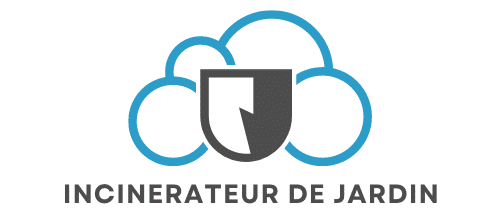How can UK-based non-profits use digital storytelling to engage with potential donors?

In an era where digital transformation is revolutionizing every sector, non-profits are increasingly turning to digital storytelling to engage with potential donors and raise money. Digital storytelling leverages the power of social media and other online platforms to connect with audiences in a meaningful way, fostering deeper relationships with donors. This article explores how UK-based non-profits can harness digital storytelling to create compelling narratives that resonate with their target audiences and drive effective fundraising campaigns.
The Power of Digital Storytelling in Nonprofit Marketing
Digital storytelling is more than just sharing stories online; it is an art that combines narrative with digital technology to create a powerful emotional connection. For UK-based non-profits, storytelling with donors at its core can transform the way they communicate their mission and values.
En parallèle : How a digital agency can elevate your casino gaming brand
Digital storytelling allows non-profits to:
- Humanize their cause: By sharing real-life stories of the people they help, non-profits can put a human face on their work, making it more relatable and compelling for potential donors.
- Build trust: Authentic stories build trust with donors by providing transparency and showcasing the impact of their contributions.
- Drive engagement: Engaging stories are more likely to be shared across social media, increasing the reach and visibility of your campaigns.
By weaving storytelling into their digital marketing strategy, non-profits can create content that not only informs but inspires action, driving both awareness and donations.
A lire également : Transform your ideas into engaging videos with templates
Crafting Compelling Stories that Resonate with Audiences
To effectively utilize digital storytelling, non-profits must focus on creating content that resonates with their target audience. Here are some strategies to help craft compelling stories:
Know Your Audience
Understanding your audience is the first step in creating stories that connect. Gather data on your potential donors' demographics, interests, and motivations. This insight will help tailor stories that speak directly to their values and concerns.
Highlight Personal Stories
Personal stories have a powerful impact. Share narratives of individuals whose lives have been changed by your charity. These stories should highlight the challenges faced, the support provided, and the positive outcomes achieved. Personal stories are relatable and evoke empathy, making them more likely to encourage donations.
Use Visuals Effectively
Visual content—such as photos, videos, and infographics—enhances storytelling by making it more engaging and memorable. High-quality visuals can capture attention and convey emotions that words alone cannot. Invest in creating visually appealing content to accompany your narratives.
Maintain Authenticity
Authenticity is key in nonprofit storytelling. Donors can often sense inauthenticity and may be deterred by overly polished or exaggerated stories. Share genuine stories with honest portrayals of both successes and challenges. This transparency builds credibility and trust.
Call to Action
Every story should have a clear call to action. Whether it's donating, volunteering, or sharing the story, make it easy for your audience to take the next step. A compelling story paired with a strong call to action can drive higher engagement and contributions.
Utilizing Social Media for Digital Storytelling
Social media platforms are essential tools for digital storytelling, offering a vast audience and various content formats to engage with potential donors.
Choosing the Right Platforms
Identify the social media platforms most frequented by your target audience. For instance, Instagram and Facebook are great for visual storytelling, while Twitter is effective for concise, impactful messages. LinkedIn can be useful for connecting with corporate donors and professionals.
Creating Engaging Content
Content that resonates with social media users tends to perform well. Consider these content types:
- Stories and Reels: Short, engaging videos or photos with a narrative can capture attention quickly. Use Instagram Stories, Facebook Stories, or TikTok to share behind-the-scenes looks, success stories, and day-in-the-life content.
- Live Streaming: Live videos on platforms like Facebook Live or Instagram Live allow for real-time interaction with your audience. Host Q&A sessions, virtual tours, or live events to connect with donors authentically.
- User-Generated Content: Encourage your supporters to share their stories and experiences related to your cause. User-generated content adds credibility and expands your reach through your supporters' networks.
Engaging with Your Audience
Social media is not just a broadcasting tool; it's a two-way communication channel. Engage with your followers by responding to comments, messages, and mentions. Show appreciation for their support and keep the conversation going. This fosters a sense of community and loyalty among your donors.
Integrating Email Marketing and Digital Storytelling
Email marketing remains a powerful tool in the digital marketing arsenal. Integrating storytelling into your email campaigns can enhance engagement and drive donations.
Personalize Your Emails
Personalization goes beyond addressing recipients by their names. Use segmentation to send tailored stories that align with the interests and past behaviors of different donor groups. Personalized stories make donors feel valued and understood.
Use Story-Driven Newsletters
Transform your newsletters into story-driven updates. Share personal stories, milestones, and impact reports in a narrative format. Highlight different aspects of your work to keep readers engaged and informed.
Incorporate Visuals and Videos
Just like social media, visuals and videos are effective in email marketing. Include compelling images and short videos that complement your stories to make your emails more engaging.
Strong Subject Lines and CTAs
Craft attention-grabbing subject lines that hint at the story inside. Intriguing subject lines increase open rates. Additionally, ensure each email has a clear call to action, guiding recipients on how they can support your cause.
Leveraging Innovative Technologies in Digital Storytelling
Emerging technologies like artificial intelligence (AI) and data analytics offer new avenues for digital storytelling in the nonprofit sector.
AI in Storytelling
AI can help in various aspects of storytelling:
- Content Creation: AI tools can assist in generating content ideas, writing drafts, and even creating personalized messages at scale.
- Data Analysis: AI can analyze donor data to identify trends and preferences, helping non-profits tailor their stories to better resonate with their audience.
Virtual and Augmented Reality
Virtual Reality (VR) and Augmented Reality (AR) provide immersive storytelling experiences. Non-profits can create virtual tours of their projects, allowing donors to experience their work firsthand. These immersive experiences can create a lasting impression and drive deeper engagement.
Data-Driven Storytelling
Utilize data to create compelling stories. Share impact metrics, success rates, and other relevant data to support your narratives. Data-driven storytelling adds credibility and helps donors understand the tangible impact of their contributions.
In the digital age, storytelling holds immense potential for UK-based non-profits to engage with potential donors and drive fundraising success. By crafting authentic, compelling narratives and leveraging the power of social media, email marketing, and emerging technologies, non-profits can create a marketing strategy that resonates deeply with their audience.
Digital storytelling humanizes your cause, builds trust, and drives engagement. With a focus on personal stories, effective visuals, and innovative technologies, non-profits can create content that not only informs but inspires action. As you embrace digital storytelling, you'll find new ways to connect with your audience, foster loyalty, and ultimately, raise more funds for your cause.
In summary, digital storytelling is a powerful tool that can transform the way non-profits connect with their target audience, ensuring their message is heard and their impact is felt. Whether through social media, email campaigns, or cutting-edge technologies, the key to successful digital fundraising lies in the stories you tell and the connections you build with your supporters.
